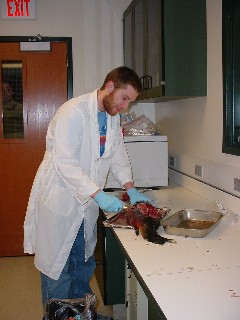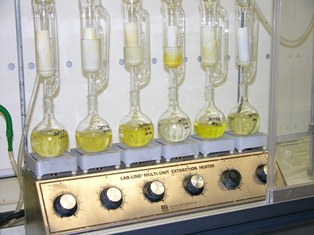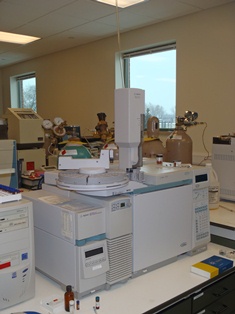Persistent Bioaccumulative Toxic Chemicals in Michigan Fish from Several Trophic Levels



A Carp being processed for analysis
PBDEs being extracted from processed fish tissue.
PBDE congeners being analyzed on a GC-MS
Products:
Project Description:
The Annis Water Resources Institute investigated Persistent Bioaccumulative Toxic Chemicals (PBTs) in fish from multiple trophic levels in the Kalamazoo River, Muskegon Lake, White Lake, Pentwater Lake, Saginaw Bay, and the waters near the Les Cheneaux Islands in Lake Huron. These locations represent systems with varying degrees of anthropogenic impact and have significant sport fisheries with respect to angler usage and fish production. Forage and predator species were collected from each location and analyzed for PBDE congeners and percent lipids content. These data provided important information concerning the concentrations of these bioaccumulative chemicals in fish and how they are distributed in the food web. Approximately 350 fish were analyzed for this project.
The final data will help determine the extent and distribution within trophic levels of PBDE in fish from the study area. The results from the Muskegon and White Lake Areas of Concern can be used for delisting the Restrictions on Fish and Wildlife Consumption Beneficial Use Impairments. AWRI produced individual reports of the data for the AOCs and lake associations. In addition, the data was presented in a public format at a Statewide Public Advisory Council meeting and at the 2008 International Association of Great Lakes Research Conference.
